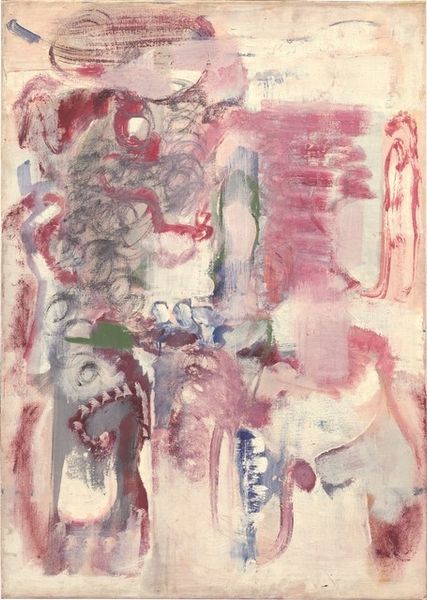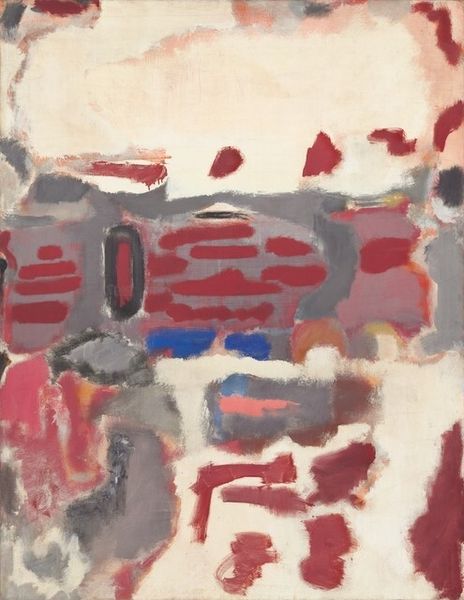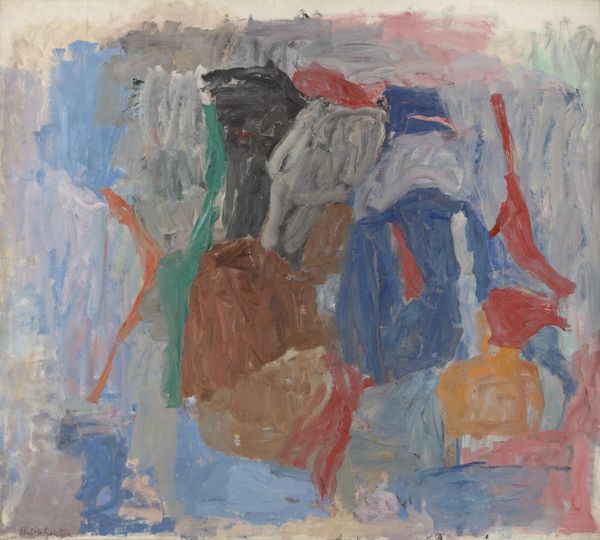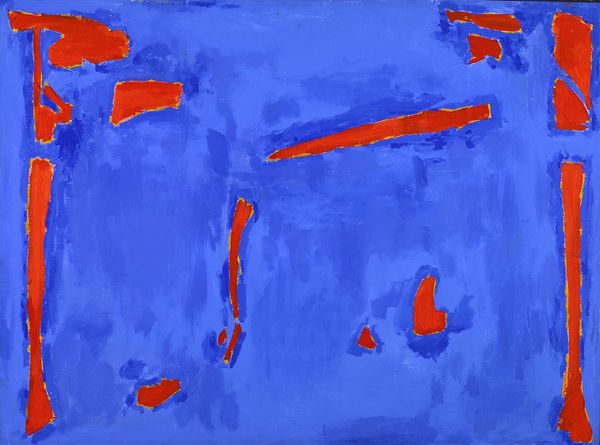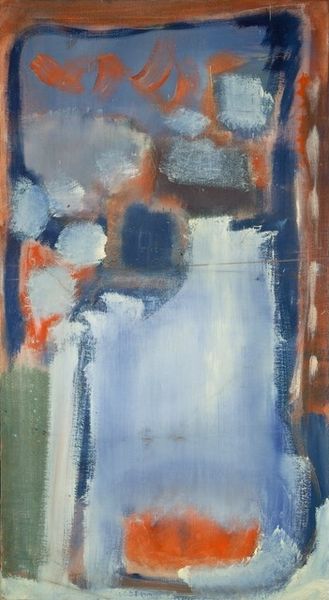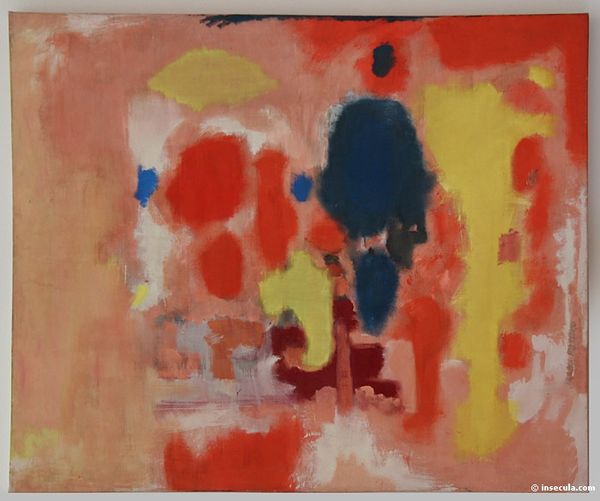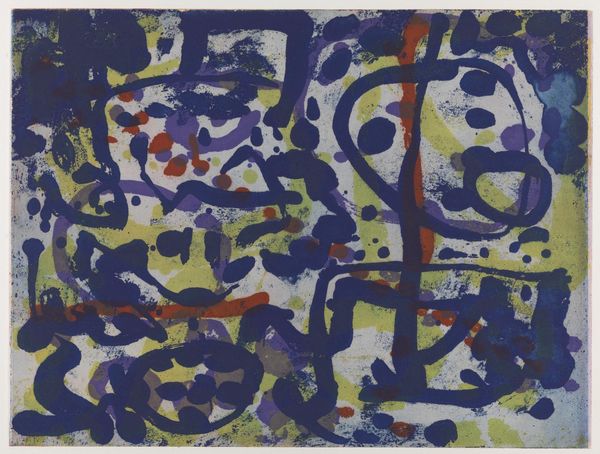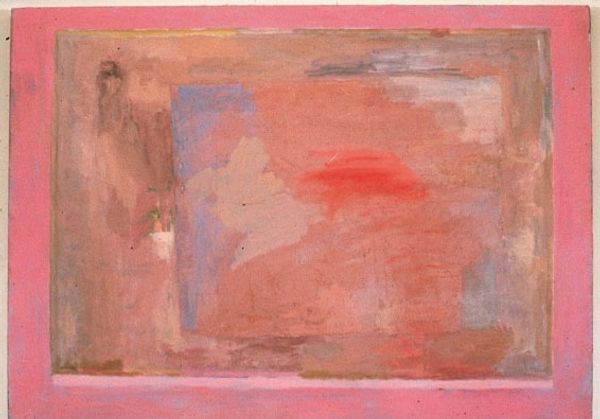
painting, acrylic-paint
#
abstract-expressionism
#
water colours
#
painting
#
acrylic-paint
#
form
#
abstraction
#
line
Dimensions: overall: 98.4 x 70.8 cm (38 3/4 x 27 7/8 in.)
Copyright: National Gallery of Art: CC0 1.0
Curator: This is an Untitled piece by Mark Rothko, painted in 1947. Acrylic paint and watercolors seem to have been his materials of choice here. Editor: Immediately, I’m struck by the boldness of the colors. That strong blue juxtaposed with the softer pinks and grays is surprisingly compelling, especially considering it’s applied so... loosely. Curator: That looseness, as you call it, is quite deliberate. Rothko, you see, was deeply invested in exploring form and abstraction, pushing beyond traditional representations to access deeper emotional truths. The application itself – the brushstrokes, the layering – that’s integral to his process. The labor is evident. Editor: And where would you situate Rothko within the artistic landscape of the time? Considering it's post-war... Curator: It places him squarely within the Abstract Expressionist movement. His works were born out of a historical moment—an era shaped by political upheaval and shifting cultural values and in direct conversation with established notions of art production and artistic expression. One of its aims was the breakdown of existing frameworks around visual artwork, like painting, to usher in newer styles and meanings. Editor: Looking at how the museum chooses to display works like this adds to the interpretation. This piece especially feels as though it requires its space, it breaths its purpose on a larger scale than you might imagine just seeing a copy of the work. It's striking how Rothko invites the viewer into this space and to project one's own emotions and narratives onto it, reflecting a very public, if ambiguous, artistic statement. Curator: Absolutely. I find it captivating how he manipulates these seemingly simple materials to such powerful emotional effect. The tension between control and spontaneity in his brushwork speaks volumes, not just about the making of the piece but about the artist’s mindset, his very being poured onto this canvas. It’s process and product intertwined. Editor: Thinking about the broader historical context, Rothko’s work serves as a bridge between personal experience and universal themes—a kind of visual language of the unspeakable. It speaks to the powerful influence artists have within the collective narrative, often shaping and responding to social anxieties, cultural evolutions, and the enduring need for human expression. Curator: In contemplating the materials and techniques Rothko utilized, we can perhaps perceive some aspect of this ambition, this yearning. It adds a new layer to how we experience its overall aesthetic impact. Editor: And how these materials have contributed to shaping cultural understanding.
Comments
No comments
Be the first to comment and join the conversation on the ultimate creative platform.


